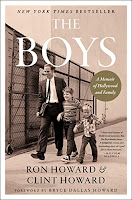Facing the Mountain by Daniel James Brown is an excellent book by the author of The Boys in the Boat, with his latest subtitled A True Story of Japanese American Heroes in World War II. The book tells two stories—one of the Americans of Japanese ancestry who fought valiantly in the war, and one of the over 100,000 people of Japanese ancestry living in the U.S. who were labeled as “enemy aliens” and forced into internment camps.

Many of the people detained were U.S. citizens, the Nisei who were born in the U.S. after their Issei parents immigrated to the county and started families and businesses, but not allowed to apply for U.S. citizenship. Brown writes of how after Pearl Harbor on December 7, 1941, racism against people of Japanese ancestry was rampant in America, with many calling for them to be detained. On February 19, 1942, President Franklin Roosevelt signed Executive Order 9066 authorizing his military commanders to designate areas of the country from which “any and all persons may be excluded.” The exclusion zone area was all of California, the western halves of Washington and Oregon, and the southern part of Arizona, including Phoenix. Additionally, many people from Hawaii were removed to detention sites on the mainland and a curfew was established for all people of Japanese ancestry. This was regardless of whether people U.S. citizens, and something not done to anyone in the U.S. of German or Italian ancestry.
Brown dedicated the book to Kats Miho, Rudy Tokiwa, Fred Shiosaki, and Gordon Hirabayashi. Kats grew up on Maui where his parents owned and ran the Miho Hotel. Their father was detained after Pearl Harbor and sent to what would become an internment camp on the U.S. mainland. Rudy was from Salinas, CA where his family leased farmland and after the February 1942 order, the two young men and their families were all detained by the U.S. government. Fred was from Spokane, WA—outside the exclusion zone—where his parents owned and ran the Hillyard Laundry. Gordon was a student at the University of Washington in Seattle and was a conscientious objector, first to the curfew, then to registering for removal to an internment camp, or “assembly center” as it was described, and later to the signing of a loyalty oath, something required of people of Japanese ancestry, but not of other American citizens—which Kats, Rudy, Fred, and Gordon were.
On February 1, 1943, Roosevelt signed a memo that said all Americans could serve in the military, enabling the Nisei, the second-generation American citizens of Japanese ancestry to join. Thousands did, many from internment camps where they were being detained by the American government, and those who did not volunteer later were subject to the draft. The American citizens of Japanese ancestry who joined the military made up the 442nd Regimental Combat Team, an all-Japanese American fighting unit that trained in Mississippi. Initially there were huge divisions in it, with fighting between young men from Hawaii and those from the mainland of the U.S. Eventually they bonded together, in part because the troops from Hawaii were sent to visit internment camps and saw firsthand what the families of their mainland counterparts had to live in. While there, some of them were sent to Alabama to guard German POWs and found them living in better conditions than their own families being held in camps by the U.S. government.
Kats, Rudy, and Fred all were part of the 442nd, and in April 1944, the order came for them to ship to Europe. They left from Virginia boatyards on May 1 and after landing in Italy were soon in heavy combat. The 442nd then in September 1994 boarded ships for France and were sent into the Vosges, heavily forested mountains between France and Germany. In late October, they suffered heavy losses rescuing what become known as the Lost Battalion—two Texas units, the 141st and 143rd Infantry Regiments with more than 200 troops that had gotten trapped—near the French town of Bruyères. Later the 442nd was sent back to Italy, and broke through the Gothic Line, a German foothold across Italy. Germany surrendered in early May 1945, Japan in early August, and it's noted by Brown that the 442nd RCT was likely the most decorated military unit of its size and length of service in American history. Of the 16 million Americans who served in WWII, 473 received Medals of Honor, with 21 of those from the roughly 18,000 who served in the 442nd. This group that made up just over .11% of the U.S. military earned 4.4% of the Medals of Honor.
When the men were back home, they again had to confront racism—despite being American war heroes—and had to help their families rebuild after homes and businesses lost when they forced into internment camps. As Brown tells the story of Kats, Rudy, Fred, and the others fighting, he also writes of Gordon and his bravery standing up for his constitutional rights that were being denied him as an American citizen. Gordon died in January 2012 and in May of that year was posthumously awarded the Presidential Medal of Freedom, the nation’s highest civilian honor.































